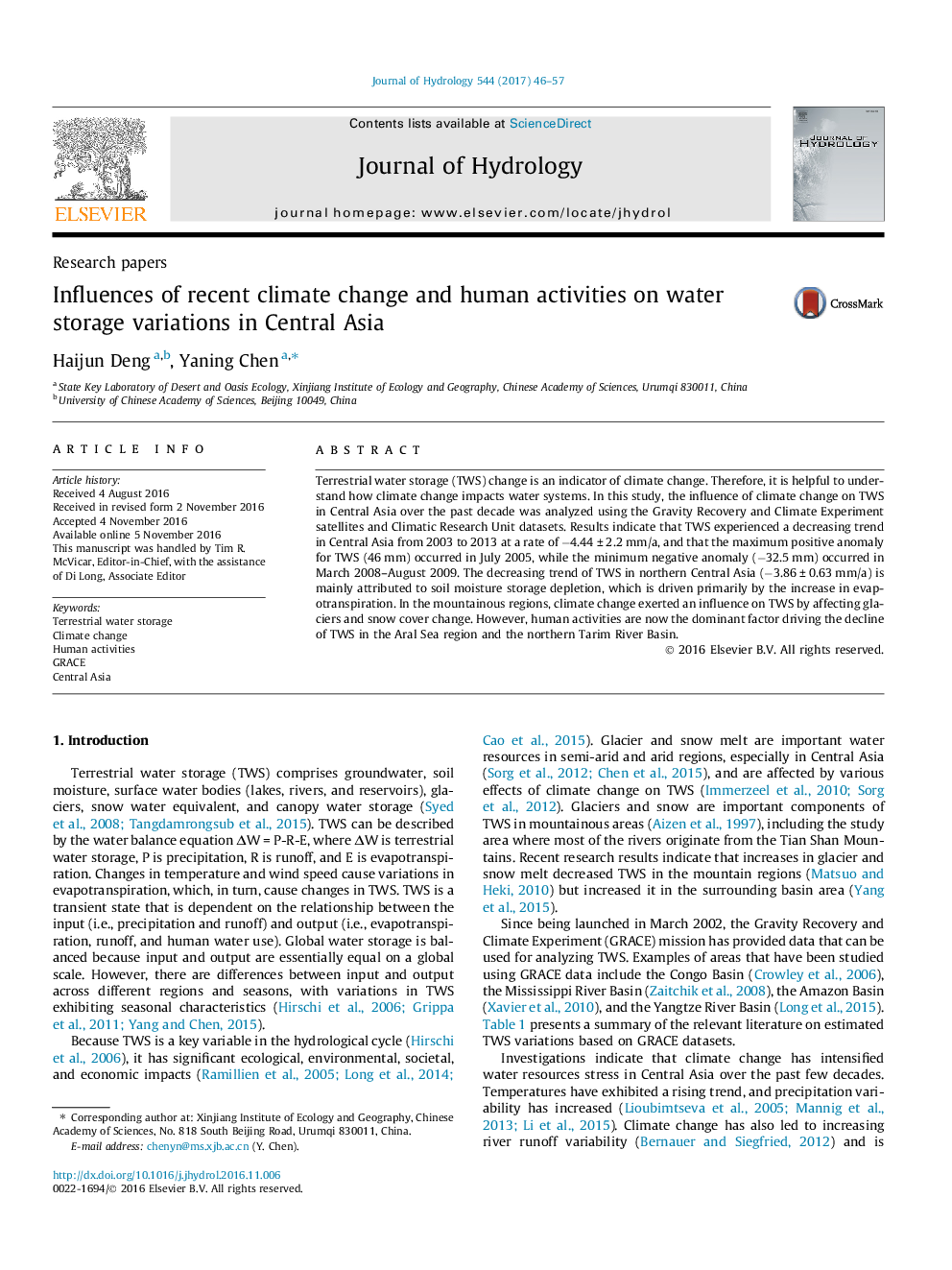| Article ID | Journal | Published Year | Pages | File Type |
|---|---|---|---|---|
| 5771325 | Journal of Hydrology | 2017 | 12 Pages |
â¢TWS experienced a decreasing trend (â4.44 ± 2.2 mm/a) in Central Asia.â¢TWS decreased in northern CA was driven by decreased P and increased ET.â¢An average water loss rate of â1.1 ± 0.64 Gt/a in Tian Shan during 2003-2013.â¢TWS decreased in northern Tarim Basin caused by groundwater overexploitation.
Terrestrial water storage (TWS) change is an indicator of climate change. Therefore, it is helpful to understand how climate change impacts water systems. In this study, the influence of climate change on TWS in Central Asia over the past decade was analyzed using the Gravity Recovery and Climate Experiment satellites and Climatic Research Unit datasets. Results indicate that TWS experienced a decreasing trend in Central Asia from 2003 to 2013 at a rate of â4.44 ± 2.2 mm/a, and that the maximum positive anomaly for TWS (46 mm) occurred in July 2005, while the minimum negative anomaly (â32.5 mm) occurred in March 2008-August 2009. The decreasing trend of TWS in northern Central Asia (â3.86 ± 0.63 mm/a) is mainly attributed to soil moisture storage depletion, which is driven primarily by the increase in evapotranspiration. In the mountainous regions, climate change exerted an influence on TWS by affecting glaciers and snow cover change. However, human activities are now the dominant factor driving the decline of TWS in the Aral Sea region and the northern Tarim River Basin.
